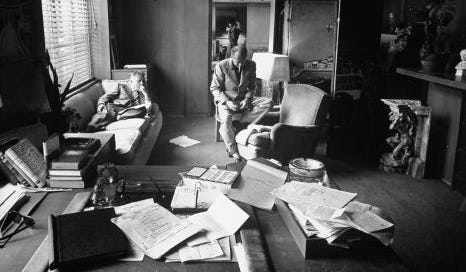THE SCREENWRITER AESTHETIC: home edition
Revelations about lighting, "MUSS" vs "MESS" as a guiding principle, the blank wall
Dear Snoops,
We hope with all hope that it will soon, again, be a very appealing prospect to be a screenwriter. That is, we hope that the Writers Guild of America (and SAG-AFTRA) get everything they want with this strike. We’re totally annoyed by Bob Iger, et al.
The strike is, of course, because the screenwriter world has changed dramatically from its He…




